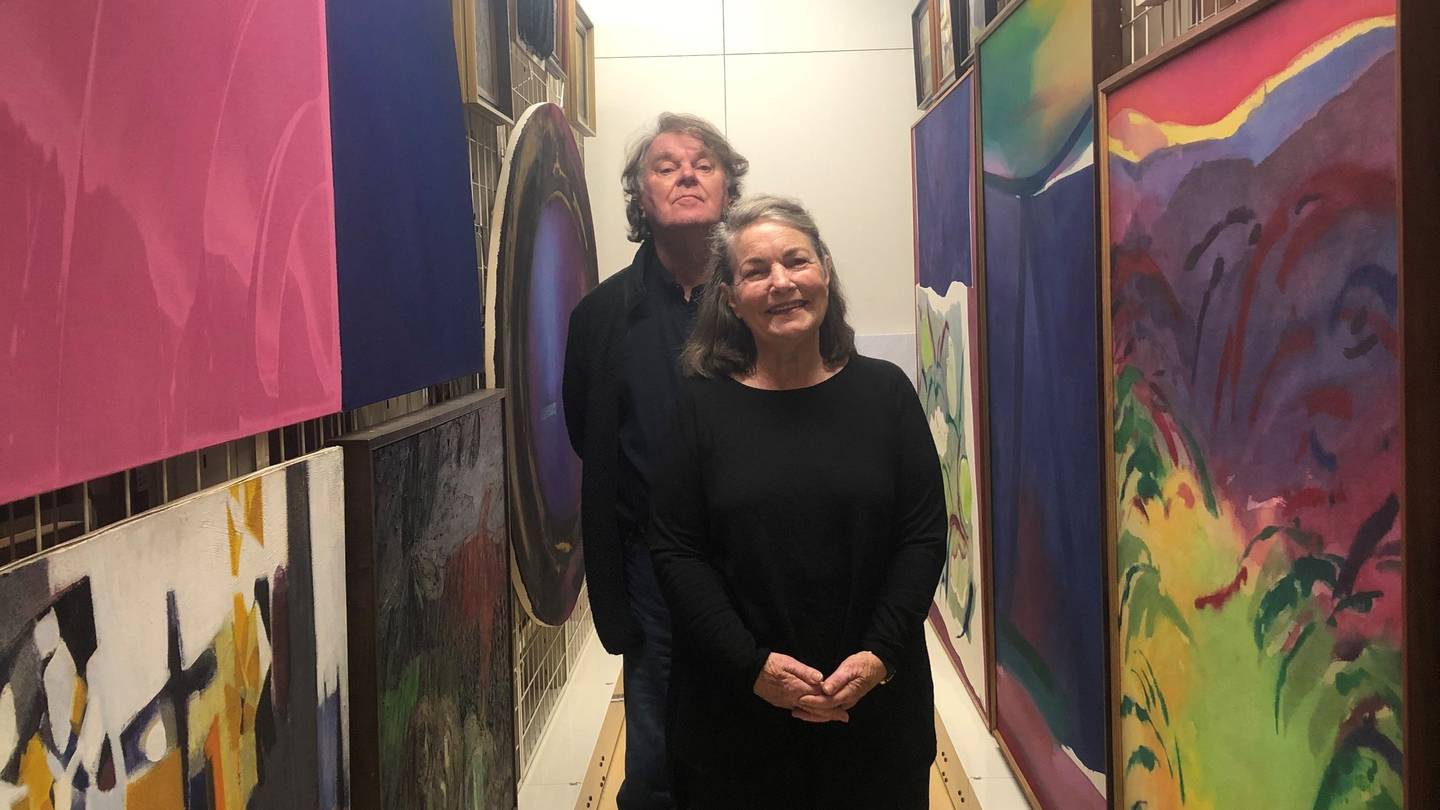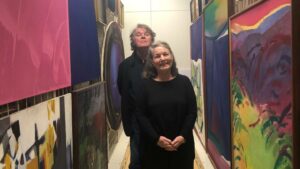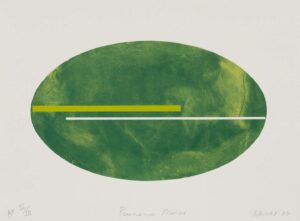
23 Nov Sarjeant Gallery happenings: Artist Gretchen Albrecht’s generous gift

Gretchen Albrecht and her husband, artist James Ross, surrounded by some of Gretchen’s works in the Sarjeant collection store in June.
The Sarjeant Gallery Te Whare o Rehua Whanganui is the recent recipient of a generous gift from New Zealand artist Gretchen Albrecht CNZM, bringing the gallery’s collection of her works completely up to date.
Albrecht, an abstract artist of international repute, gifted 25 lithographic prints to the gallery when she and her husband, James Ross, visited the Sarjeant in June. The gallery already held a strong selection of the artist’s work but this dated up to only 2002.
“She noted that the survey of her work was incomplete so offered a very generous gift that made our holdings more comprehensive, and better told the story of her stylistic and technical development,” Sarjeant Gallery director Greg Anderson said.
Albrecht is best known for her geometrical, abstract style and use of bold colour, but during her 50-plus years as an artist she has also produced figurative paintings, a watercolour series, prints and sculptures.
“In 1983, critic Wystan Curnow noted that she was one of relatively few New Zealand artists fully immersed in their own interpretation of a painted abstraction that had long been established overseas, but had never managed to take root in this country. Realism had previously been the dominant theme in New Zealand painting and Albrecht was one of the few whose work diverged from that style,” Anderson said.
The July 2020 My Choice selection, made by the much-loved, late Whanganui potter April Pearson, included the Albrecht painting Drift II. Pearson commented “Just look at all this sumptuous vibrancy of colour! The composition speaks to me of sheer joy in laying down each glorious shade as if the artist is reaching up to a radiant sunset, a promise of life’s breath behind a stormy sky”.
Albrecht’s work has featured significantly throughout the gallery’s recent history and has been included in exhibitions such as Seven Painters: The Eighties (1982) and the touring exhibition Distance looks our way: 10 artists from NZ (1991/93), which was displayed at the 1992 Seville Expo in Spain and subsequently at 10 other venues in New Zealand.
“The artist has gifted the Sarjeant a fantastic selection of prints,” Anderson said.
“Once again Albrecht explores her elliptical shapes, though in this grouping they range from very bright hues to surprising luminescent dark works. Among the group of works is a series from 2016 called Four Colour Studies After Turner. The colour fields in these prints allude to Albrecht’s close experiences with the watercolours of JMW Turner in London during the late 70s and have once again turned up in this series all these years later.
“When you see this, it is a joy to understand how an artist’s work continues to develop right throughout her career.”
Collection curator Jennifer Taylor-Moore said Albrecht’s works are made to be seen and examined up close.
“While they look stunning when viewed from afar, it is when you get up close to them that you see the stunning detail and effects of the printmaking process.”
Albrecht herself has said that at times she finds working on the smaller format of paper “is a relief and a break from the physicality of painting on [large] canvases”.

Pounamu Mirror, a stone lithograph made in 2006, is one of the works Gretchen Albrecht has gifted to the Sarjeant Gallery
The artist is more immediately engaged in an intimate relationship with the image and details, whereas with a large painting “there is a different physical and spatial dimension to making and reading an image. You come up to the painting and move back from it to view at a distance”.
Albrecht has maintained her interest in and affection for the Sarjeant Gallery.
“She, like so many others, is very excited at the prospect of the gallery returning to Pukenamu Queen’s Park and in due course her paintings will once again grace its walls,” Anderson said.
Albrecht’s newly gifted works can be viewed via Explore the Collection, the Sarjeant’s digital portal into the collection, which can be accessed through Sarjeant.org.nz
This article first appeared in the Whanganui Chronicle and NZ Herald online on 23 Nov, 2021

